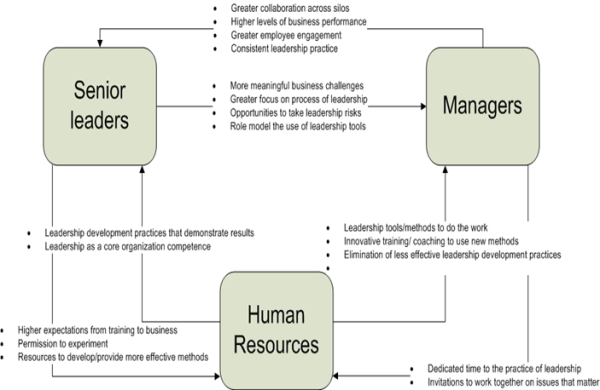ATD Blog
Impact of Strategic Leadership Tools
Tue Feb 25 2014

In our last post, we gave some examples of strategic leadership tools. In this post, we describe the positive impact these tools can have on an organization.
Imagine you just bought a wonderful piece of furniture from Ikea. Now that you have the carton at home, only one hurdle remains: you have to put it together. You open the box and see unfamiliar hardware and many pieces to assemble.
Now imagine that you didn’t have the right screwdrivers. And worse, as you rifle through the box, you notice the manufacturer forgot to include the instructions. Without these tools and instructions, you can’t imagine how you will actually reconstruct the piece of furniture you saw in the showroom.
This is what it can be like for people to take on leadership work. The challenge is in front of them, they may even know what it should look like, but the means to move from current to future state is unknowable.
Leadership tools provide a uniform approach to accomplish complex work. By following the tool’s process, participants are able to more comprehensively see the issues, gather diverse perspectives, create new possibilities, and more easily execute their plans.
The effective use of leadership tools affects people in significant ways:
Everyone’s attention is focused on the same strategic task; they are not scattered and diffused.
Everyone is clear about the beginning and end to the task as defined by the tool; they are not wasting energy on figuring out where to start and when to end.
Everyone’s thinking is made visible; participation and interaction is typically part of the process.
Everyone is using the same language in doing the work; terms are defined which promotes understanding.
The task is no longer personal; it’s about following the tool’s process to achieve organizational success.
People who need structure, have structure.
People who need permission to be open and honest, have permission to be so.
Embedding leadership tools into organization culture
To be effective, strategic leadership tools must be embedded into how the organization naturally operates. In this way it more easily becomes part of the culture.
For example, managers expect that budgets are completed at certain times of year, connected to the corporate strategy, supported with cost justifications, and open to public scrutiny. It is accepted that this is a natural process necessary to run the business; it is simply how things are accomplished. Budgets in most organizations are completed generally on time and considered by management to be a legitimate business activity.
The effective use of leadership tools typically requires a significant change in leader behavior. Those wishing to move in this direction must demonstrate to critical internal leaders that using tools creates better and faster decisions and helps the organization accomplish objectives more easily.
As noted from the outset of this series, embedding the use of leadership tools into organization-wide leadership practice is no easy task and requires key stakeholder groups to work in new ways. The figure below demonstrates how HR/training, senior leaders, and managers can partner to more effectively increase the use of tools to accomplish leaders’ work.
Figure 1: How Senior Leaders, Managers, and HR Can Use Tools Effectively

HR (and training)
The human resources and training functions can increase the use of leadership tools, not necessarily by implementing an organization-wide program, but instead by beginning more slowly. They should identify those organization challenges that historically defied effective resolution or where new strategic initiatives may be required.
Find leader-partners who are willing to work with you and match them with innovative leadership tools that are best suited to accomplish the leadership work. Then work side-by-side with the identified leaders to help them learn and apply the methods.
Success at this level creates the springboard to initiate change at the broader organizational level. This approach offers the HR and training functions an opportunity to provide greater strategic and execution support so that it then becomes viewed more favorably by the line organizations.
Senior leaders
Senior leaders will find that the use of strategic tools will make it easier to move their employees from an overemphasis on short-term, frenetic activity to a more effective focus on those issues that have longer-term, more strategic impact. Senior leaders can support the development of the practice of leadership by modeling the use of tools and expecting their direct reports to do the same, particularly on those issues where the right decisions and execution matter the most.
Managers
One of the biggest challenges middle managers face is to actively reduce their management workload and take on more of the leadership work. In making this transition, managers typically encounter natural reticence in using new leadership approaches to their work because they have not developed the confidence and competence to use them.
It is helpful when managers get the support they need from HR through training, coaching, as well as the support from senior leaders regarding both the importance of the leadership work and the understanding regarding the risks of trying something new.
Leadership is a discipline that provides incredible results when executed properly. In this day and age, leaders need to carefully choreograph the collaboration that must go on among senior leaders, HR/Training, and managers throughout the organization. To do this, leaders need tools. Not using leadership tools is like trying to pull a nail out of a two-by-four with your fingers. It can be very painful!
